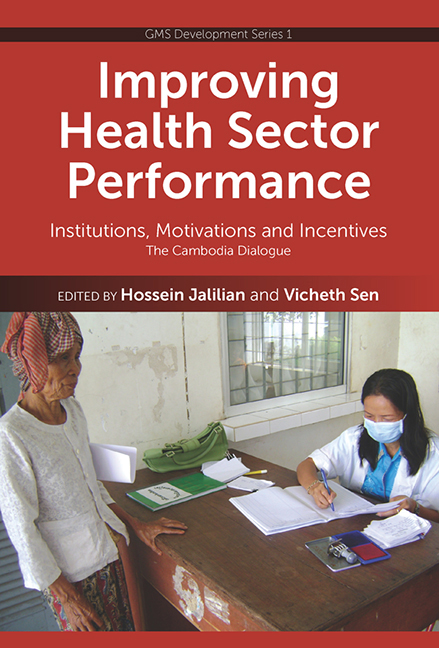 Improving Health Sector Performance
Improving Health Sector Performance Book contents
- Frontmatter
- Contents
- Acknowledgements
- Foreword
- List of Contributors
- Introduction
- Part I Overview
- Part II Organizational Arrangements: Purchasing Health Services
- 3 The Transition to Semi-Autonomous Management of District Health Services in Cambodia: Assessing Purchasing Arrangements, Transaction Costs and Operational Efficiencies of Special Operating Agencies
- 4 Vouchers as Demand-side Financing Instruments for Health Care: A Review of the Bangladesh Maternal Voucher Scheme and Implications for Incentives for Human Resource Management
- 5 Social Health Insurance in Cambodia: An Analysis of the Health Care Delivery Mechanism
- 6 Purchasing Health Services in New Zealand
- Part III Optimal Health Workers Contracts
- Part IV Managing Doctors and Nurses
- Part V Health Service Consumer Behaviour
- APPENDIX
- Index
6 - Purchasing Health Services in New Zealand
from Part II - Organizational Arrangements: Purchasing Health Services
Published online by Cambridge University Press: 21 October 2015
- Frontmatter
- Contents
- Acknowledgements
- Foreword
- List of Contributors
- Introduction
- Part I Overview
- Part II Organizational Arrangements: Purchasing Health Services
- 3 The Transition to Semi-Autonomous Management of District Health Services in Cambodia: Assessing Purchasing Arrangements, Transaction Costs and Operational Efficiencies of Special Operating Agencies
- 4 Vouchers as Demand-side Financing Instruments for Health Care: A Review of the Bangladesh Maternal Voucher Scheme and Implications for Incentives for Human Resource Management
- 5 Social Health Insurance in Cambodia: An Analysis of the Health Care Delivery Mechanism
- 6 Purchasing Health Services in New Zealand
- Part III Optimal Health Workers Contracts
- Part IV Managing Doctors and Nurses
- Part V Health Service Consumer Behaviour
- APPENDIX
- Index
Summary
INTRODUCTION
New Zealand and Cambodia are both situated on the rim of the western Pacific Ocean. Beyond this, they appear to share few common features. Cambodia is a developing country with a GDP per capita of under US$600 and a population of more than fourteen million. New Zealand has a GDP per capita of over US$27,000 and a population of only four million. While Cambodia spent 5.9 per cent of its GDP on health care in 2005–06, New Zealand spent 9.4 per cent, slightly higher than the OECD average of 8.9 per cent. New Zealand compares favourably with the rest of the OECD countries for infant mortality and life expectancy at birth. Despite the contrast between the two nations, recent reforms in the public health system in New Zealand have some lessons for Cambodia, especially with respect to purchasing and contracting.
New Zealand's health system is predominantly publicly funded, with approximately 67 per cent of health expenditure coming from general taxation and a further 9 per cent from social insurance for accident-related injuries. Out-of-pocket payments account for 16 per cent of total expenditure and private insurance for about 5 per cent (Ministry of Health 2008). User charges apply for general practice consultations and pharmaceuticals, but most other services, including maternity services, are provided free of charge. While personal health services are provided universally regardless of income, some social support and rehabilitation services are income tested.
Service delivery is shared by public and private providers. All major population centres have at least one public hospital. Most larger centres also have one or more private hospitals that provide mostly surgical procedures on a fee-for-service basis, paid for either out of pocket or via private health insurance. Community-based services are generally delivered by private providers, including individual and group-owned practices, NGOs, and for-profit organizations.
- Type
- Chapter
- Information
- Improving Health Sector PerformanceInstitutions, Motivations and Incentives - The Cambodia Dialogue, pp. 136 - 148Publisher: ISEAS–Yusof Ishak InstitutePrint publication year: 2011
